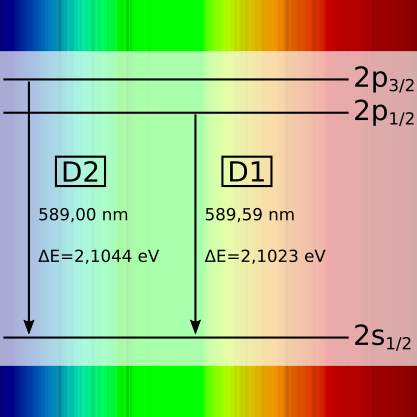


Measurements with the following sources will find particular appeal in the fields of astronomy, physics and atmospheric sciences. These measurements are concerned with natural spectra, such as those produced by atmospheric processes or in astrophysical objects—topics of central interest in astronomy and environmental physics.
We have created separate pages for the various light sources in our example spectra.
Depending on the position of the sun, especially at different heights of the sun above the horizon, the solar spectrum changes due to varying degrees of absorption of radiation by the layers of air passing through.
When the sun is high in the sky, the effects of the atmosphere on the light passing through it are relatively small. The Fraunhofer lines (shown here) that can be observed therefore consist mainly of absorptio lines that have already formed in the solar atmosphere. When the sun is lower in the sky, however, the light travels greater distances through the earth's atmosphere, which means that absorption effects caused by components of the atmosphere come to the fore. [More …]

With a spectrometer of sufficient resolution, the Fraunhofer lines in the solar spectrum can easily be made visible. These absorption lines allow conclusions to be drawn about the chemical composition of the gas atmosphere of the sun as well as that of the earth's atmosphere. The evaluation of such lines is one of the most important tools in astronomy, also in the spectrum of other stars. Such lines in the solar spectrum were systematically examined by Joseph von Fraunhofer starting in 1814, from whom they also got their name. [More …]

Sparklers are fascinating pyrotechnic products that produce a characteristic sparking and glowing phenomenon. Their spectra are an ideal and easily accessible light source that can be used to demonstrate that excited atoms can not only generate emission lines, but can also cause absorption lines by absorbing radiation of the same wavelength. [More …]

Here you can easily ask a question or inquiry about our products:
Last update: 2025-08-10



